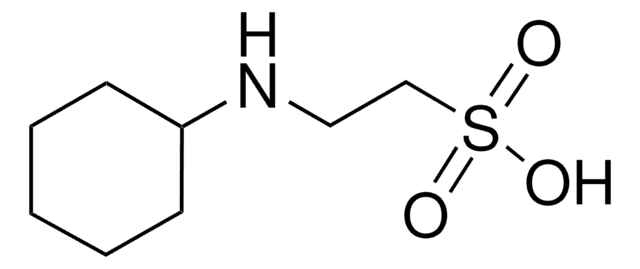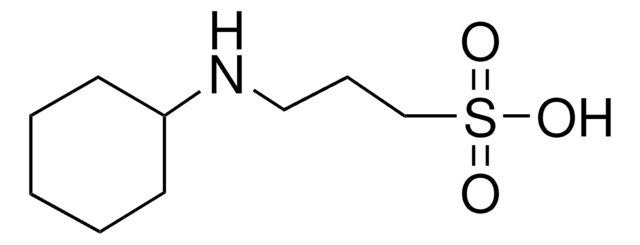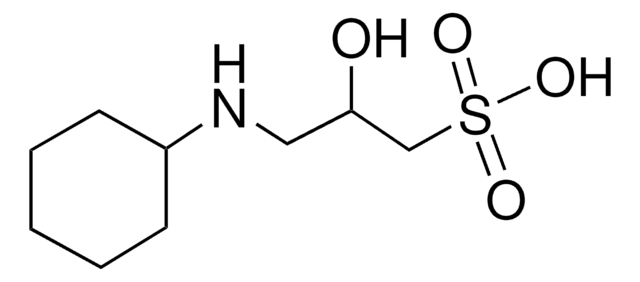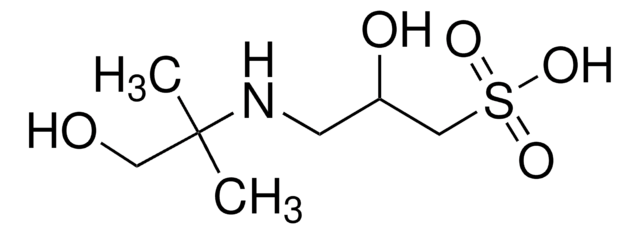29311
CHES
BioUltra, ≥99.5% (T)
Synonym(s):
2-(Cyclohexylamino)ethanesulfonic acid
About This Item
Recommended Products
product line
BioUltra
Quality Level
Assay
≥99.5% (T)
form
powder
impurities
insoluble matter, passes filter test
ign. residue
≤0.05%
loss
≤0.5% loss on drying, 110 °C
pH
3.0-5.0 (25 °C, 0.5 M in H2O)
useful pH range
8.6-10.0
pKa (25 °C)
9.3
solubility
H2O: 0.5 M at 20 °C, clear, colorless
anion traces
chloride (Cl-): ≤50 mg/kg
sulfate (SO42-): ≤500 mg/kg
cation traces
Al: ≤5 mg/kg
As: ≤0.1 mg/kg
Ba: ≤5 mg/kg
Bi: ≤5 mg/kg
Ca: ≤10 mg/kg
Cd: ≤5 mg/kg
Co: ≤5 mg/kg
Cr: ≤5 mg/kg
Cu: ≤5 mg/kg
Fe: ≤5 mg/kg
K: ≤50 mg/kg
Li: ≤5 mg/kg
Mg: ≤5 mg/kg
Mn: ≤5 mg/kg
Mo: ≤5 mg/kg
Na: ≤50 mg/kg
Ni: ≤5 mg/kg
Pb: ≤5 mg/kg
Sr: ≤5 mg/kg
Zn: ≤5 mg/kg
λ
0.5 M in H2O
UV absorption
λ: 260 nm Amax: 0.08
λ: 280 nm Amax: 0.05
SMILES string
OS(=O)(=O)CCNC1CCCCC1
InChI
1S/C8H17NO3S/c10-13(11,12)7-6-9-8-4-2-1-3-5-8/h8-9H,1-7H2,(H,10,11,12)
InChI key
MKWKNSIESPFAQN-UHFFFAOYSA-N
Looking for similar products? Visit Product Comparison Guide
General description
Application
Other Notes
Storage Class Code
11 - Combustible Solids
WGK
WGK 3
Flash Point(F)
Not applicable
Flash Point(C)
Not applicable
Personal Protective Equipment
Choose from one of the most recent versions:
Already Own This Product?
Find documentation for the products that you have recently purchased in the Document Library.
Our team of scientists has experience in all areas of research including Life Science, Material Science, Chemical Synthesis, Chromatography, Analytical and many others.
Contact Technical Service





